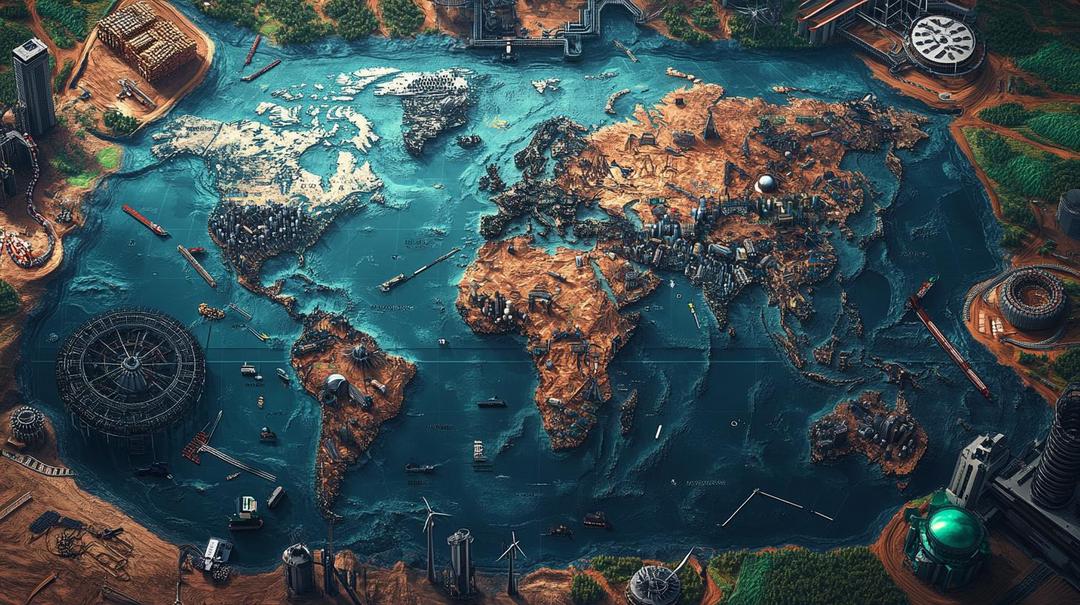From your smartphone to electric vehicles to vital military equipment, a lot of these products might not even exist without innovations around rare earth elements. However, it is important to understand and even appreciate everything that went into that end product. Supply chain bottlenecks, global geopolitics, and increasingly higher demand are all shaping the rare earth market in real-time.
Let’s dive into the most significant trends in the rare earth market and uncover the economic forces driving its future.
What's Inside
What is the State of the Rare Earth Market and Economics in 2024?
Rare earth elements (REEs) are a group of 17 metallic elements critical to modern technology, powering everything from smartphones to electric vehicles and renewable energy systems. Understanding their market dynamics is crucial for investors and industry professionals.
Global Supply and Demand Overview
- REEs are experiencing unprecedented demand due to technological and green energy advancements
- Current global production is concentrated in a few key regions, with significant geopolitical implications
- Projected growth rates suggest a robust market, driven by:
- Renewable energy infrastructure
- Electric vehicle manufacturing
- Advanced electronics and defense technologies
Production Landscape
- China remains the dominant producer, controlling 60-70% of global rare earth production.
- The United States and Australia are emerging as significant competitive alternatives.
- Expected production growth of 5-7% annually over the next five years
Factors Influencing the Global Supply and Demand of Rare Earth Elements
China’s Market Dominance
- Historical control of rare earth mining and processing
- Strategic advantages in extraction and refinement technologies
- Potential geopolitical leverage through supply chain management
Global Competitive Dynamics
- Increasing international efforts to diversify rare earth sources
- Significant investments in mining infrastructure outside China
- Developing recycling technologies to reduce dependency on new mining
Environmental and Policy Considerations
- Growing environmental regulations impacting mining practices
- Green energy policies driving increased demand for REEs
- Sustainable extraction is becoming a critical competitive factor
Geopolitical Influence on Rare Earth Markets
Trade and Strategic Tensions
- Ongoing trade conflicts between China and Western countries
- Impact of global conflicts on rare earth supply chains
- Government policies aimed at securing domestic mineral supplies
Strategic Initiatives
- United States Inflation Reduction Act supporting domestic rare earth production
- International cooperation agreements to establish alternative supply networks
- Investment in technological innovations to reduce geopolitical dependencies
A Deep Dive into Rare Earth Prices
Price Volatility Factors
- Market speculation and commodity trading dynamics
- Scarcity of specific rare earth elements
- Technological advancements in extraction and processing
- Differentiation between light and heavy rare earth elements
Price Trends
- Significant price fluctuations observed between 2022-2024
- Increasing transparency in pricing mechanisms
- Growing importance of long-term supply contracts
Emerging Players Competing with China
Alternative Suppliers
- Developing rare earth capabilities in:
- United States
- Canada
- Australia
- Emerging African nations
Investment and Development Strategies
- Corporate and governmental investments in mining infrastructure
- Technology transfer and collaborative research initiatives
- Overcoming regulatory and scalability challenges
Investing in the Rare Earth Sector
Key Investment Opportunities
- Top rare earth mining companies:
Investment Strategies
- Diversified exposure through ETFs
- Balanced portfolio considerations
- Understanding associated risks and long-term growth potential
Looking Ahead: The Future of the Rare Earth Market
Technological and Market Predictions
- Potential technological substitutes for rare earth elements
- Impact of environmental standards on mining practices
- Role in emerging green technologies:
- Solar energy
- Hydrogen infrastructure
- Autonomous vehicle development
Long-Term Market Outlook
- Gradual market stabilization
- Increased global supply chain diversification
- Continued importance in technological innovation
Conclusion
The rare earth market is set to witness transformative changes as demand skyrockets for these critical minerals in everything from electric vehicles to defense technologies. While the world continues to face supply limitations, geopolitical tensions, and price fluctuations, there’s no denying the potential growth—and risk—investors should consider in this sector. By monitoring emerging players and technological advancements, there are significant opportunities for those looking to diversify their portfolios with rare earth elements.
FAQs
Why are rare earth elements so important?
Rare earth elements are used in numerous high-tech applications, including smartphones, renewable energy technologies, and advanced military equipment. Without them, many modern innovations wouldn’t be possible.
Is China the only major player in rare earth production?
While China dominates the rare earth market, controlling over 60% of global production, other countries like the USA, Australia, Canada, and some African nations are actively increasing their production capacities to diversify supply chains.
How do geopolitical tensions impact the rare earth market?
Geopolitical tensions, particularly between China and Western countries, can create supply chain instability, influence prices, and encourage countries to look for alternative sources of rare earth materials.
Are rare earth prices expected to rise in coming years?
Prices may remain volatile due to geopolitical challenges, supply limitations, and increasing demand in high-growth industries like renewable energy and electric vehicles. Emerging suppliers might help stabilize prices long-term.
Which industries rely most heavily on rare earth elements?
Among the heaviest REE consumers are the technology sector (smartphones, tablets, magnets), renewable energy (wind turbines, electric batteries), and defense (weapons systems, satellites).


Dustin
Driven by a fascination with rare earth elements and their role in powering modern tech and engineering marvels. A true car and tech enthusiast, he loves exploring how these hidden heroes fuel our most exciting innovations.
You Might Also Like…